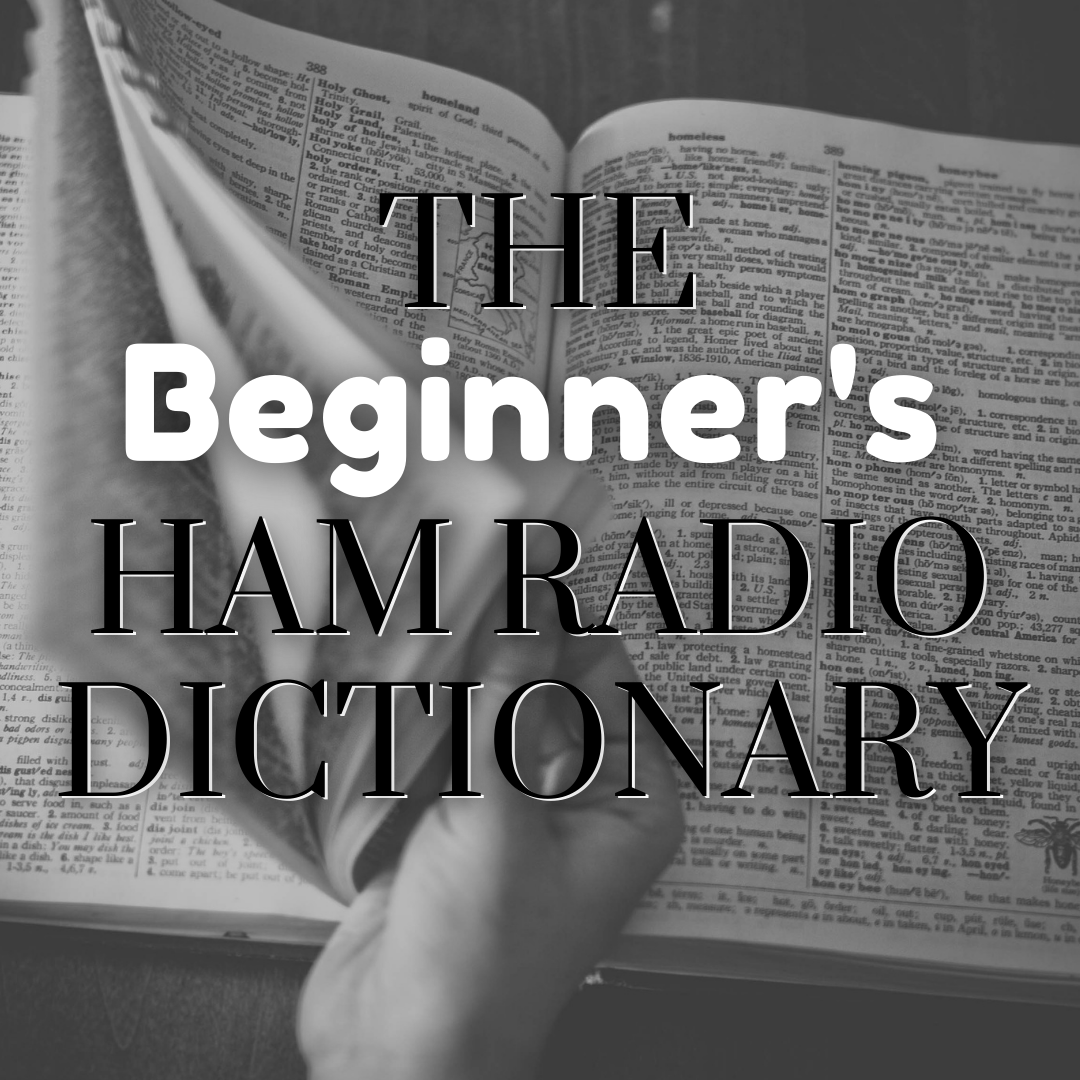
The Beginner's Ham Radio Dictionary for Simple DMR Terms
Just like any new language, DMR has its own set of terms and phrases that you will need to learn, in order to speak the language everyone else is speaking. To help you out, we have broken down a lot of these basic DMR terms to make the transition of learning the DMR language easy. This short dictionary-like guide will give you a collection of new terms to study and use when transmitting and will help to start speaking the DMR dialect so many experienced hams have mastered.
We'll start with the term..
- Amplitude modulation (AM)
- Amplitude modulation is a method of combining an information signal and an RF, or radio frequency, carrier. Shortwave broadcast stations use this type of AM, as do stations in the Standard Broadcast Band (v). Few amateurs use double-sideband voice AM, but a variation, known as single sideband, is very popular.
- APRS
- APRS stands for Amateur Packet Reporting System. It’s a situational awareness system used for data location services in both casual and professional environments, from road trips to emergency communications.
- ARRL
- The ARRL, also known as the American Radio Relay League, is a US-based organization of amateur radio operators. It publishes the monthly QST magazine.
- Call sign
- A call sign is a series of unique letters and numbers assigned to a person who has earned an Amateur Radio license. If desired, a ham radio operator can apply for a vanity call sign, which is a custom call sign chosen by the ham radio operator with certain restrictions.
- Color code
- A system in which numerical values are assigned to various colors. Colored stripes are painted on the body of resistors and sometimes other components to show their value.
- CQ
- CQ stands for "Calling any station". It’s a general call made when requesting a conversation with anyone. Like many other telegraph terms which originated on the landlines, CQ was brought over into radio and used as a general call to all ships by the Marconi Company. Other companies used KA until the London Convention of 1912, which adopted CQ as the international general call or "attention" signal.
- But why the letters CQ? From the French, sécurité, which translates to safety. In this context, however, it means “pay attention”.
- CW
- CW is a communications mode transmitted by on/off keying of a radio-frequency signal. It’s another name for the international Morse code.
- Duplexer
- A duplexer is simply a device that allows a dual-band radio to use a single dual-band antenna.
- Frequency modulated (FM) phone
- These are the types of signals used to communicate by voice over most repeaters. FM is a method of combining an RF carrier with an information signal, such as voice. The voice information, or data, changes the RF carrier frequency in the modulation process.
- As you might expect, we use voice or data to vary the frequency of the transmitted signal. FM broadcast stations and most professional communications teams like police, firefighters, taxi drivers, etc. use FM. VHF/UHF FM voice is the most popular amateur mode.
- Mobile device
- A radio transmitting device designed to be mounted in a vehicle, such as the 578UVIII Plus. A push-to-talk (PTT) switch activates the transmitter. We have a course on BridgeCom University dedicated exclusively to mobile radios, so if you want to learn more about what they’re used for and why, we encourage you to check out the link in the description and start studying today!
- Phonetic alphabet
- The phonetic alphabet is composed of standard words used on voice modes to make it easier to understand letters of the alphabet, such as those in call signs. For example, the call sign KA6LMN stated phonetically is Kilo Alpha Six Lima Mike November.
- QSO
- A QSO is simply a conversation between two radio amateurs. A highly active ham radio operator will have many QSOs on any given day.
- Repeater
- A repeater is an amateur station that receives and re-transmits signals over a wider area, thus “repeating” the signal. Here is an example of a repeater. They are typically found on towers and tall buildings, used to boost the range of handheld and mobile units. Repeaters receive on one frequency and transmit on another, either in the same band or two different bands, a method known as crossband. Most modern radios are automatically programmed to execute repeater shifts or "offsets" in certain parts of ham radio bands.
- Transceiver
- A transceiver is both a radio transmitter and receiver combined in one unit. A fantastic example is the Xiegu G90 transceiver, which we also have a dedicated course for on BridgeCom University. Again, the link to BridgeCom University is in the description for you to check out. We can’t stress enough how important it is to have trustworthy resources out there, so if you find yourself struggling, you know where to go.
- UHF
- UHF stands for Ultra-High Frequency. It’s the band of frequencies between 300 MHz and 3 GHz. This includes the amateur 70cm (440 MHz) band.
- VHF
- VHF stands for Very-High Frequency. This is the band of frequencies between 30 MHz and 300 MHz. This includes the popular amateur 6-meter (50 MHz) and 2-meter bands (144 MHz).
Now you at least have a basic understanding of the most common ham radio terminology that is currently used today. This list does not begin to cover all of the different types technical jargon you’ll hear on your ham radio journey, but it does provide you with a foundation of different terms and phrases, so you can eventually transition into learning some of the more complicated language of this awesome hobby.
Is there a term you think should have been on the list? Leave us a comment and let us know!







2 comments
It is a good start, needs a little more in-depth . like anything else , start out small and add to it.
Your explanation for the term “duplexer” is wrong and misleading. A duplexer is a device that allows simultaneous use of a transmitter and receiver, with a frequency separation between them, on the SAME frequency band, like a VHF or UHF repeater. Your explanation refers to a diplexer or triplexer to use a dual or triple band transceiver on a dual or triple band antenna. There are many hams who do not realize the difference between the two devices. I expected your staff, who sell repeaters, to know this.
Sincerely, Tony Lelieveld VE3DWI.